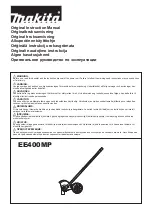
68
Chemical compatibility of wetted materials
BlueShadow Detector 50D Instructions V7659
Polychlortrifluorethylene (PCTFE, Kel-F®)
The semi-crystalline thermoplastic material is plasticizer-free and dimen-
sionally stable, even in a wide temperature range
(−240
°C to+205 °C) .
It
is moderately resistent against ether, halogenated solvents and toluene .
Halogenated solvents over +60 °C and chlorine gas should not be used .
Fluorinated rubber (FKM)
The elastomer consisting of fluorinated hydrocarbon stands out due to
a high resistance against mineral oils, synthetic hydraulic fluids, fuels,
aromatics, and many organic solvents and chemicals . However, it is not
compatible with strong alkaline solvents (pH value >13) like ammonia,
and acidic solvents (pH value <1), pyrrole and THF . Operating tempera-
ture: Between -40 °C and +200 °C .
Perfluorinated rubber (FFKM)
This perfluoro elastomer has a higher fluorine content as fluorinated
rubber and is therefore chemically more resistant . It can be employed at
higher temperatures (up to 275 °C) . It is not compatible with Pyrrole .
12.3 Non-metals
Diamond-like carbon (DLC)
This material is characterized by a high hardness, a low coefficient of fric-
tion and thus low wear . In addition, it is highly biocompatible . DLC is inert
against all acids, alkalis and solvents commonly used in HPLC .
Ceramic
Ceramic is resistant against corrosion and wear and is fully biocompati-
ble . An incompatibility against acids, alkalis and solvents commonly used
in HPLC is not known .
Alumina (Al2O3)
Due to their high resistance to wear and corrosion, alumina ceramic is
used as a coating for mechanically stressed surfaces . It is a biocompatible
material with low thermal conductivity and low thermal expansion .
Zirconium oxide (ZrO2)
Zirconia ceramics are characterized by their high mechanical resistance,
which makes them particularly resistant to wear and corrosion . It is al-
so biocompatible, has low thermal conductivity and is resistant to high
pressures .
Sapphire
Synthetic sapphire is virtually pure monocrystalline alumina . It is biocom-
patible and very resistant to corrosion and wear . The material is character-
ized by a high hardness and a high thermal conductivity .
Ruby
Synthetic ruby is monocrystalline alumina and gets its red color by the
addition of some chromium oxide . It is biocompatible and very resistant
to corrosion and wear . The material is characterized by a high hardness
and a high thermal conductivity .



































